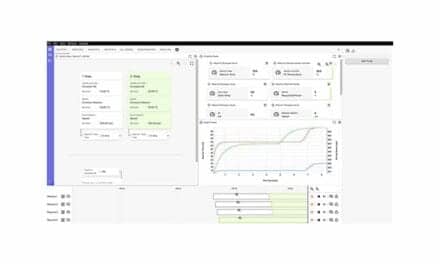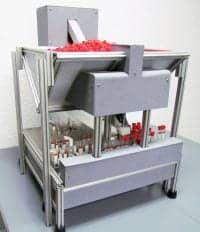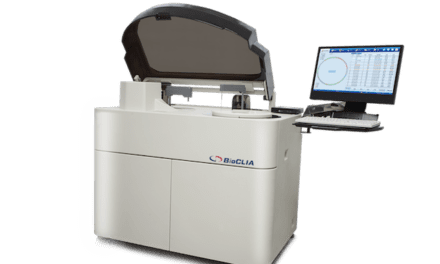The ongoing clinical laboratory labor shortage is putting a strain on the U.S. healthcare system. Automation can help clinical labs cope with the ongoing shortages by improving efficiency and maximizing staff time.
By Bastian Kindermann, PhD
“Labor shortages” and “supply chain issues” have become pandemic-era buzzwords throughout every industry and profession, including clinical laboratories. Whether facing a lack of pipette tips or trained laboratory professionals, many laboratories are having to do more with less. While many supply chain issues are ultimately temporary, a lack of adequately trained laboratory professionals is more worrisome. The specialization, certification, and education of expert technicians can take years to develop. As these individuals continue their careers, their overall expertise and technical acumen is often invaluable to many clinical laboratories.
Even before the pandemic, training programs in medical technology and clinical laboratory sciences were shutting their doors. Between 1975 and 2005, more than 500 programs closed around the country, leading to a two-thirds drop in graduates.[1] As older technicians retire, the field lacks younger hires to replace them.[2]
At the same time, the need for such workers continues to grow at a rate of 11%, according to the Bureau of Labor Statistics, faster than the average rate of 8% for all jobs across the U.S.[3] One reason for this growing need is the extended life expectancy of U.S. citizens, which is accompanied by an increasing number of people suffering from chronic conditions that require monitoring. This places a greater demand on clinical laboratories to perform diagnostic tests. Advancements in technology often increase complexity of tests or result interpretation, making specialized training more important than ever.
To continue to produce high-quality results, many clinical laboratories have started automating routine tasks, from pipetting to library prep. The up-front investments in equipment help to preserve precious staff time for analytical and hands-on work that require skilled personal. By automating simpler tasks, lab managers can ensure that their technicians spend more of their time performing rewarding, engaging tasks rather than mundane sample prep. These changes will not only allow a lab to process more samples in a shorter period of time with less physical strain, they could also help decrease staff turnover. As a result, automation can allow labs to do more with less.
Crisis Point: The Flow Cytometry Labor Shortage
Although the shortage in trained medical technologists and clinical lab scientists is nearly universal across the field, this lack of personnel is especially acute in flow cytometry. An ever-increasing number of tests rely on this method to measure a variety of cellular characteristics in fluids like blood or bone marrow. Analyzing cells by flow cytometry is the method of choice to diagnose and monitor blood cancers such as leukemia and lymphoma.
A 2019 study in Scientific Reports showed that the incidence rates of all cancers in the U.S. has remained steady since 2011. However, the trajectory is not uniform amongst the different types of cancer. Scientists at City of Hope, for example, did note a sharp increase in the incidence of acute myeloid leukemia (AML) and chronic myeloid leukemia (CML) that corresponds to the country’s aging population.[4] This dramatic rise in both AML and CML incidence has put a tremendous pressure on flow cytometry labs for the ongoing monitoring of these patients.
At the same time, a survey by the American Society for Clinical Pathology (ASCP) of U.S.-based clinical laboratories showed that many of the field’s most experienced flow cytometry experts are retiring.[5] Flow cytometry showed some of the largest losses of experienced staff across all departments surveyed. Even more worrying, the 2020 survey found a marked lack of experienced flow cytometry lab supervisors.[6] These numbers had declined so much that the sample size was too small to generate statistically-relevant data—a first since the survey began in 1988. While much of this staffing loss has already occurred, the ongoing personnel shortage will continue to be felt for a long time.
Whereas some open positions continue to be rapidly filled, others remain open for long periods. Part of the challenge in filling these positions is a lack of certified candidates. Nearly three-quarters of those working in the field of flow cytometry say that certification is required for newly hired personnel, a need that is amplified by the specialized knowledge base and skill sets for performing flow cytometry. The 2018 ASCP survey showed that 75% of staff and 85% of supervisors in flow cytometry departments had official certification, compared to just 43% of staff in 2020 (supervisor numbers were too low to generate data), a decline of one-third in just two years. A lack of highly trained workers contributed to 6 out of 10 cited hiring deficiencies in laboratories performing moderate- or high-complexity testing.
Coping with Technician Shortages
The 2020 ASCP survey showed that, when jobs remain unfilled for long periods of time, the responsibilities of the missing personnel are delegated to other staff members, temporarily left undone, or permanently eliminated. At the Hematology Diagnostics Lab at the University Hospital Bonn in Germany, Laboratory Manager Stefanie Held, PhD, says that her team is currently running the lab with 2.5 fewer positions than required. It’s a shortage that means significant extra work for all employees, including overtime and postponed vacation days to maintain the minimum staffing level. Held reports that, in 2021, her lab had advertised a position three times without receiving a suitable application, and that she expects to need an entire year to fill an open position. The shortfall in hiring means that turnaround times for all non-urgent tests have lengthened. Held’s group has also temporarily halted fluorescence in-situ hybridization (FISH) diagnostics for the summer.
Clinical scientist Marci O’Driscoll is concerned about facing similar shortfalls in trained lab technicians at Tampa General Hospital in Florida.
“Our flow technologists are some of the hardest working and most dedicated laboratorians I have ever had the privilege of working with. They are also very specialized, highly trained, and therefore hard to replace,” O’Driscoll says.
It’s why she has begun beta testing some of the latest equipment that would automate aspects of flow cytometry, such as sample preparation. The goal is to eliminate as many of the non-value-added process steps (what some call “process wastes”) to improve efficiency. It’s the epitome of the old adage of “work smarter, not harder.” O’Driscoll believes that these investments might help labs to keep up with an increased volume of samples while maintaining the same turnaround time without the need to hire and onboard new technicians.
Sandra Hernandez, senior product manager, Clinical Flow Cytometry, at Beckman Coulter Life Sciences, says that automation has additional benefits. Besides being labor-intensive, many flow cytometry workflows have a lack of standardization and are error prone. Besides decreasing staff involvement and turnaround times, another benefit of automation is a decrease in error rates. She points out that although high-throughput, low-complexity workflows are the easiest to automate, a variety of flow cytometry tasks can be automated, even in settings with lower throughput and higher complexity.
How Automation Can Help
No level of automation can ever fully compensate for the lack of highly skilled medical technologists and clinical laboratory scientists. Their invaluable insight and expertise will always be in high demand. Flow cytometry specialists are no exception. But even in this field, which has historically relied on manual workflows, automation can bring huge benefits. It can allow staff to spend their time in more rewarding aspects of the job, decreasing worker turnover. It can also increase throughput and decrease errors.
Most laboratory managers know the feeling of being asked to do more with less, and somehow finding a way to deliver. Automation can help with these steps and help reduce the strains from ongoing labor shortages, finally improving patient care.
ABOUT THE AUTHOR
Bastian Kindermann, PhD, is a cell and molecular biologist, and serves as global commercial marketing manager for Clinical Flow Cytometry Solutions at Beckman Coulter Life Sciences.
REFERENCES
[1] Kaplan RL, Burgess TE. The impending crisis. Journal of Microbiology & Biology Education. 2010 Dec 20;11(2):140-3.
[2] https://ascls.org/addressing-the-clinical-laboratory-workforce-shortage/
[3] https://www.bls.gov/ooh/healthcare/clinical-laboratory-technologists-and-technicians.htm#tab-6
[4] Hao T, Li-Talley M, Buck A, Chen W. An emerging trend of rapid increase of leukemia but not all cancers in the aging population in the United States. Scientific reports. 2019 Aug 19;9(1):1-3.
[5] Garcia E, Kundu I, Fong K. American Society for Clinical Pathology’s 2019 wage survey of medical laboratories in the United States. American journal of clinical pathology. 2021 May;155(5):649-73.
[6] Garcia E, Kundu I, Kelly M, Soles R. The American Society for Clinical Pathology’s 2018
Vacancy Survey of Medical Laboratories in the United States. American journal of clinical pathology. 2019 Aug; 152(8):15-168.





